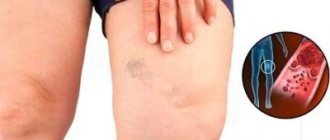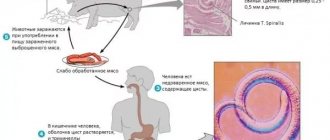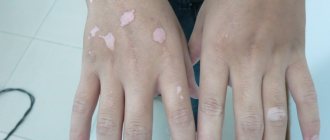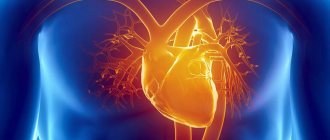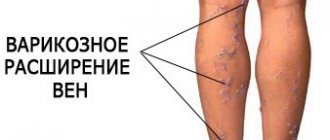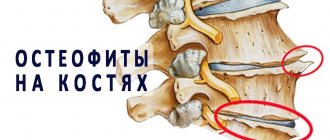Shortness of breath today is a common complaint among people of different ages. Dyspnea is a subjective feeling that is manifested by an acute episodic or permanent feeling of lack of air. The appearance of tightness and severe discomfort in the projection of the chest is characteristic. The clinical manifestations of the described syndrome include increased respiratory movements. If the number of chest excursions per minute exceeds 18, tachypnea occurs. The article provides answers to questions about why shortness of breath (dyspnea) develops during exercise, walking, what are the causes and what is the treatment.
When a person is at rest, he rarely pays attention to the frequency of his breathing. When performing a small physical activity, parameters such as the frequency and fullness of inhalation and exhalation, and the time characteristics of these phases change. But in a person, the emerging condition does not cause discomfort and anxiety, since all changed indicators are normalized after the load is completed. Pathological shortness of breath is the appearance of a feeling of lack of air in a calm state. The second option is that its severity does not decrease after rest. Severe shortness of breath when walking indicates possible serious diseases of the respiratory or cardiovascular system.
With expiratory shortness of breath, the patient experiences severe difficulty in exhaling. Wheezing can be heard from a distance, especially if the cause is bronchial asthma. The sputum is difficult to produce, it is viscous in nature, sometimes described as “vitreous.” The described phenomenon is based on spasm of small bronchi and bronchioles.
Expiratory shortness of breath when walking, exertion, and sometimes at rest is typical with emphysematous deformation of the lungs, allergic diseases, and attacks of chronic obstructive disease or asthma. The inspiratory nature of breathing disorders occurs with tumors that stenose large bronchi. Often, inflammation of the laryngeal mucosa can cause such dyspnea. The cause of inspiratory dyspnea when walking in children may be a foreign body in the respiratory tract.
Mixed dyspnea (combines inspiratory and expiratory) during exertion, walking can develop with heart failure, angina pectoris. Its development indicates decompensation of these diseases and requires active therapeutic measures.
Symptoms
At the initial stage of damage to the cardiovascular and respiratory systems, shortness of breath when walking (causes in older and young people may be associated with the presence of organ disease) occurs during any other physical activity, for example, walking up stairs. If the disease progresses, dyspnea is noticed even when walking slowly or tying shoelaces. The following symptoms may occur:
- chest tightness;
- difficulty inhaling or exhaling;
- suffocation;
- severe compression in the chest area;
- lack of oxygen;
- Inability to fully exhale and take deep breaths.
Causes of shortness of breath and increased heart rate
Severe shortness of breath can be caused by oxygen deficiency, as a result of which the external respiratory organs are not able to provide a complete blood gas composition. Difficulty breathing and hoarseness during inhalation and exhalation develops with certain diseases that are directly related to damage to the lungs, central nervous or cardiovascular system.
When walking and exercising
Often occurring attacks in which it takes some time for breathing to normalize, accompanied by dizziness, weakness, and fever, are the first symptoms of health problems and a sign of the development of a dangerous disease. Shortness of breath can be caused by a variety of reasons, the most common of which are:
- Severe shortness of breath during physical exertion.
- Fast and long walking.
- Frequent exposure to emotional stress causes the development of a disease such as shortness of breath. In a state of anxiety, adrenaline is produced, causing the air to oversaturate the lungs. After the panic stops, breathing becomes easier, shortness of breath goes away. No special medication is required.
- Anemia, anemia. If shortness of breath does not go away for a long time, it is necessary to take special medications intended to treat a specific disease; it is desirable that such a drug includes iron.
- Obesity. This is an unpleasant disease that causes shortness of breath, because in obese people the heart is difficult to tolerate any kind of physical activity, so they often experience difficulty breathing. The medication must be selected by a doctor.
After meal
Severe shortness of breath occurs after a meal. As a result of an overfilled stomach, increased pressure occurs on the diaphragm, so it is unable to fully participate in the breathing process and is bothered by pain. You should not eat large amounts of food, not only if you have certain diseases, but also because there is a load on the digestive organs.
The mechanism of occurrence of this disease looks like this:
- After food enters the stomach, the active work of the digestive system begins.
- A large number of enzymes are produced by the stomach, intestines, and pancreas.
- Energy is used to push food through the gastric tract.
- Processed enzymes (proteins, carbohydrates, fats) are absorbed into the bloodstream.
- A large volume of blood flows to the organs of the digestive system.
- Redistribution of blood flow in the body begins.
- The intestines receive more oxygen, unlike other organs.
- If there are no malfunctions in the functioning of the body, no unpleasant sensations are observed. When there are various diseases or abnormalities, oxygen starvation of the internal organs begins. To get rid of this phenomenon, the lungs begin to work at an accelerated pace, which provokes the formation of shortness of breath.
Severe shortness of breath with bronchitis
This disease appears as a result of narrowing of the bronchi, certain changes in the lung tissues, which provokes insufficient oxygen supply to the blood. In this regard, the respiratory system begins to function at too fast a pace. A cough and a wheezing sound may appear. Often this condition provokes bronchitis - in chronic and acute course of the pathology. As a result of the development of a chronic type of disease, shortness of breath occurs constantly. Only a doctor can prescribe an effective remedy for such a disease.
In early pregnancy
It is extremely rare that this unpleasant feeling manifests itself in the first months of pregnancy. Shortness of breath can be caused by a woman’s poor and unhealthy lifestyle, various serious illnesses, or a reaction to medications. In early pregnancy, shortness of breath occurs for various reasons:
- strong physical activity;
- anemia;
- asthma;
- emotional overstrain, stress;
- allergy;
- alcohol abuse;
- smoking;
- strong hormonal surge;
- increase in circulating blood volume;
- wearing synthetic and tight clothing.
The child has
Increased breathing is provoked both with increased physical activity and in the case of the development of certain pulmonary diseases, problems in the functioning of the cardiac or nervous system, allergies, gas exchange disorders, respiratory viruses, asthma. If a child often experiences shortness of breath, parents need to be wary, because this may be the first sign of a serious disease. Only a doctor can prescribe the use of any medicine.
What does shortness of breath when walking indicate?
Shortness of breath when walking, the causes of which may be related to problems of the respiratory and cardiovascular systems, occurs infrequently or in a chronic form. The most common sign of abnormality is a lack of air that occurs suddenly. In addition, the patient's breathing rhythm may become disturbed, whistling and wheezing may be heard, the skin turns pale, and the lips acquire a blue tint.
Chronic shortness of breath can be determined by the respiratory rate. Disruption of the rhythm of exhalations and inhalations indicates the presence of pathology. Severe shortness of breath when walking, the causes of which are disruptions in the functioning of the respiratory system, causes a severe oxygen deficiency. Along with dyspnea, increased sweating may occur. This is usually noticed when the patient goes out into the cold, at night, after eating and during exercise. Most often, shortness of breath occurs when walking up stairs. Causes: lung infection, pneumonia, viral disease. Possible manifestations are severe pain in the chest and loss of consciousness.
Dyspnea can appear even at night when a person is at rest. This is due to insufficiency of the heart ventricle (left) or congestion in the tissues of the heart. In this case, it is easier for the patient to breathe if he sleeps in a sitting position or on several pillows.
In cold weather, shortness of breath may also occur when walking. The reasons are the presence of abnormalities in the functioning of the lungs, anemia, low body weight, an allergic reaction to low temperatures. In this case, experts advise learning to breathe correctly, without inhaling cold air through your mouth.
Classification of shortness of breath
By type they distinguish:
- Expiratory shortness of breath (common in COPD diseases) - it is difficult to exhale air, since the lumen of the bronchi is too narrow.
- Inspiratory - due to the narrowing of the lumen in the trachea, it is difficult to inhale.
- Mixed - both inhalation and exhalation are difficult. Usually indicates heart disease.
According to the place of occurrence, shortness of breath is classified into:
- pulmonary - occurs due to problems with the respiratory system. The latter can be caused by inhalation of harmful gases, pleurisy, pneumonia or blockage of an artery in the lung.
- cardiac. A lack of oxygen in the blood causes the respiratory center to work more actively. Because of this, physical stress increases and severe shortness of breath occurs.
- cerebral. Also associated with irritation of the respiratory center. In this case, it is caused by disorders in the nervous system, infection or oxygen deprivation.
- hematogenous - caused by changes in the chemical composition of the blood. what causes shortness of breath. Hematogenous breathing problems indicate the development of acitosis, hypercapnia, diabetic coma or anemia.
Possible causes and types of dyspnea
The most common causes of shortness of breath when walking are:
- Chest deformity.
- Deviations in the nervous system - panic attacks, neuroses, and hysteria.
- Inflammatory processes in the bronchi - asthma.
- Decrease in the amount of hemoglobin and red blood cells.
- Inflammation of lung tissue - pneumonia.
- Obesity.
- Disruption of the cardiovascular system.
- Dyspnea can be cardiac, central, pulmonary and hematogenous.
Reasons for the development of shortness of breath
There are 4 main reasons for the development of dyspnea:
- heart failure;
- respiratory failure;
- metabolic disorders;
- hyperventilation syndrome.
Please note: respiratory failure can be caused by problems with the pulmonary vessels, diffuse lesions of the lung tissue, a decrease in bronchial patency, as well as pathologies of the respiratory muscles.
Hyperventilation syndrome manifests itself in some types of neuroses and against the background of neurocirculatory dystonia.
Pathologies of the cardiovascular system as causes of shortness of breath
The cause of shortness of breath in heart disease is usually an increase in pressure in the vessels supplying the myocardium.
Dyspnea in heart pathologies increases as the disease progresses. In the early stages, it develops under load, and when the process is started, it appears even at rest.
Please note: with severe heart damage, nocturnal paroxysmal shortness of breath is often observed, which is an attack of suffocation that suddenly develops during sleep. The pathology is also known as cardiac asthma; its cause is stagnation of fluid in the lungs.
Respiratory failure leading to shortness of breath
Dyspnea due to respiratory pathologies is often chronic. The patient may experience it for months or years. This type of dyspnea is characteristic of chronic obstructive pulmonary disease, when the lumen of the airways narrows and mucus accumulates in it. In this case, the patient's short, rapid inhalation is followed by difficult exhalation, accompanied by noise. In parallel with expiratory shortness of breath, a cough and the discharge of viscous secretions are often noted. After using an inhaler with a bronchodilator, breathing usually returns to normal. If it is not possible to stop the attack with conventional medications, the patient’s condition deteriorates very quickly. Lack of oxygen leads to loss of consciousness. In such cases, urgent medical attention is required.
In diseases of infectious origin (acute bronchitis and pneumonia), the severity of shortness of breath directly depends on the severity of the pathological process. With adequate therapy, symptoms resolve within a few days. Severe pneumonia can lead to heart failure. Shortness of breath increases. This condition is an indication for urgent hospitalization of the patient.
Gradually increasing constant dyspnea may indicate the presence of tumors in the lungs. The severity of the symptom increases as the tumor grows. In addition to shortness of breath, the patient has a persistent, unproductive cough, often hemoptysis, general weakness and cachexia (significant weight loss).
Important: the most dangerous pathologies of the respiratory system, in which shortness of breath occurs, are toxic pulmonary edema, pulmonary embolism (PE) and local airway obstruction.
Thromboembolism occurs when the branches of the pulmonary artery are blocked by blood clots. As a result, part of the organ ceases to participate in the act of breathing. Dyspnea in this situation develops suddenly and is disturbing with minimal exertion and even at rest. The patient complains of tightness and pain in the chest, which resembles the symptoms of an angina attack. In some cases, hemoptysis is noted.
Obstruction of the airways can be caused by aspiration of a foreign object, compression of the bronchi or trachea from the outside (with goiter, aortic aneurysm and tumors), cicatricial narrowing of the lumen or chronic inflammation in autoimmune diseases. With obstruction, shortness of breath is inspiratory in nature. The patient's breathing is loud with a whistling noise. Impaired airway patency is accompanied by suffocation and painful coughing, which intensifies with changes in body position. Bronchodilators are ineffective in such cases; mechanical restoration of the patency of the trachea and bronchi and measures aimed at treating the underlying disease are necessary.
The cause of shortness of breath can also be toxic edema, which develops as a result of inhalation of aggressive substances or against the background of an infectious lesion of the respiratory system with severe intoxication of the body. The patient experiences increasing shortness of breath, which, as the process progresses, gives way to suffocation. When breathing, bubbling sounds are clearly audible. In this situation, urgent medical care is needed, which involves maintaining respiratory function and detoxifying the body.
Respiratory failure develops in such an acute condition as pneumothorax. With a penetrating wound to the chest, air enters the pleural cavity and puts pressure on the lung, preventing it from expanding when inhaling. The patient requires emergency surgery.
Shortness of breath is one of the symptoms of tuberculosis, actinomycosis, and emphysema.
Important: dyspnea can develop with severe scoliosis. The cause of difficulty breathing and shortness of breath in this case is deformation of the chest.
To establish the factors leading to the development of respiratory failure, additional (instrumental) research methods are needed: radiography (fluorography), spirometry, ECG, tomography, angiography and bronchoscopy.
Metabolic disorders
One of the causes of shortness of breath is anemia. With anemia, the number of red blood cells in the blood decreases or the hemoglobin content in red blood cells decreases. Since hemoglobin is responsible for transporting oxygen to all cells, when it is deficient, hypoxia develops. The body reflexively tries to compensate for the lack of oxygen, so the breathing rate increases and the person takes deeper breaths. The causes of anemia may be congenital metabolic disorders, insufficient dietary iron intake, chronic blood loss, severe illnesses, blood cancer, etc.
Patients with anemia complain of general weakness, headaches, memory impairment, decreased ability to concentrate, loss of appetite and sleep disorders. The skin of such patients is pale or has a jaundiced tint. The disease is easily diagnosed based on laboratory blood test data. The type of anemia is clarified during additional studies. Treatment is carried out by a hematologist.
Dyspnea often accompanies endocrine pathologies such as diabetes mellitus, thyrotoxicosis (thyroid disease) and obesity. With thyrotoxicosis, metabolism accelerates, as a result of which the body's need for oxygen increases. An increase in the level of thyroid hormones increases the frequency of myocardial contractions, and the heart cannot pump blood to other tissues in the required volume. As a result, hypoxia develops, forcing a person to breathe more often and deeper.
Obesity significantly complicates the functioning of the lungs, heart and respiratory muscles, which also leads to oxygen deficiency.
As diabetes mellitus progresses, it affects the blood vessels, so all tissues of the body begin to suffer from a lack of oxygen. Diabetic nephropathy leads to anemia, which further increases hypoxia and causes shortness of breath.
Shortness of breath due to nervous disorders
Up to 75% of patients of psychiatrists and neurologists complain from time to time of more or less severe shortness of breath. Such patients are disturbed by a feeling of lack of air, which is often accompanied by the fear of death from suffocation. Patients with psychogenic dyspnea are mostly suspicious people with an unstable psyche and a tendency toward hypochondria. Shortness of breath can develop in them under stress or even for no apparent reason. In some cases, the so-called attacks of false asthma.
A specific feature of shortness of breath in neurotic conditions is its “noise production” by the patient. He breathes loudly and frequently, moans and groans, trying to attract attention.
Pulmonary and hematogenous dyspnea
Quite often, expiratory shortness of breath when walking is diagnosed. Causes that take a long time to treat are pathologies or complex lung diseases. Pulmonary dyspnea is characterized by spasms and swelling, which affects the respiratory process. The expiratory form occurs with bronchial asthma, the patient hears wheezing and whistling.
In addition, inspiratory shortness of breath when walking is common. “Causes - treatment” are the main two components, which only a specialist can help you understand. Therefore, if you notice problems with breathing even with minor physical activity, or difficulties in pronouncing speech, you should seek help from the hospital. This shortness of breath occurs due to diseases of the larynx, its swelling and tumors.
Hematogenous - most often occurs when toxins enter the blood. This shortness of breath is observed in patients suffering from diabetes. Symptoms: noisy, heavy breathing.
Development mechanism and distinction criteria
Each activity, including breathing, is regulated by a specific part of the brain. In a state of stress and nervous overstrain, the central and peripheral nervous systems fail. Control over the breathing center in the brain is lost, overexcitation spreads, resulting in faster breathing.
The lungs become overfilled with air, causing hypocapnia, that is, the amount of oxygen in the blood increases excessively, and carbon dioxide decreases below normal. This imbalance of gases causes an attack of psychogenic shortness of breath.
Despite the fact that the symptoms of its manifestation are similar to true shortness of breath, there are still some criteria that allow it to be differentiated:
| Types of shortness of breath Criteria | Psychogenic | True |
| Cause | Examination of internal organs fails to detect | Pathology of the heart, kidneys, lungs, etc. |
| Bodily symptoms | None | Pale or cyanotic skin, barrel chest, edema |
| Changing body position | Does not affect breathing pattern | A change in position can alleviate or provoke a pathological symptom. It often intensifies especially after physical activity. |
| Nature of violations | Fickle | Constant |
| Periodicity | It worsens due to the weather, at certain times of the day (for some, attacks occur in the morning, for others - at night). It appears more often in spring and autumn. | |
| Cough | Not controlled by medications | In some cases, it can be treated with medication |
| Switching attention | All symptoms go away if you move the conversation in a different direction | Shortness of breath persists, no connection |
Cardiac and central dyspnea
Cardiac dyspnea is associated with thinning of the vascular walls, stenosis, and heart failure. Often, a heart defect becomes what causes shortness of breath when walking (severe oxygen deprivation). Signs of this type of shortness of breath are polypnea and orthopnea. The first is characterized by rapid breathing due to excessive blood flow to the heart or heart failure. The second develops with failure of the left ventricle of the heart. With orthopnea, the patient strives to be in an upright position, since only then does he feel better.
Central shortness of breath during fast walking, the causes of which are the effect of neurotropic substances, deviations of the central nervous system, most often manifested by arrhythmia. This type of shortness of breath is not a manifestation of any pathology; central shortness of breath is a cause in itself.
Respiratory failure and dyspnea
These pathologies are, in fact, directly related. Dyspnea, which develops due to respiratory failure, often becomes chronic and can last for months. It is typical for patients with chronic obstructive pulmonary disease, in which the airways become narrowed and mucus accumulates in them.
The person takes a short breath, after which he exhales with difficulty with noise and wheezing. In parallel, there is a wet or dry cough, the release of viscous, thick sputum. It is possible to bring breathing back to normal through the use of a bronchodilator, but it is not always possible to stop an attack in this way, as a result of which the patient feels dizzy and may lose consciousness.
In acute bronchitis, as well as in pneumonia of infectious origin, the severity of dyspnea depends on the severity of the person’s injury. Severe pneumonia with high body temperature often leads to heart failure with a feeling of weakness, pain in the heart, and shortness of breath becomes increasingly severe. The patient's general condition requires urgent hospitalization.
In addition, the appearance of shortness of breath with a gradual increase may indicate the development of tumors in the lung tissue, and the larger the tumor grows, the more severe the dyspnea. In addition to shortness of breath, the patient has a dry hacking cough, sometimes hemoptysis, a general state of weakness, sudden weight loss, and severe fatigue.
The most dangerous conditions for a person in which shortness of breath may be present are toxic pulmonary edema, local airway obstruction and pulmonary embolism. Thromboembolism is a blockage of the lumen by blood clots, as a result of which part of the organ cannot participate in respiratory processes. The pathology develops gradually, the affected person has complaints of chest pain, a feeling of tightness, and hemoptysis.
Local obstruction is caused by compression of the bronchi or trachea, for example, when foreign bodies enter the lungs, goiter, tumors and aortic aneurysm. In addition, it can form due to cicatricial narrowing of the lumen of the respiratory tract, due to autoimmune diseases with an inflammatory process.
Toxic pulmonary edema occurs due to the ingress of toxic or aggressive substances into the respiratory tract, as well as as a result of an infectious lesion of the body with obvious intoxication. Shortness of breath gradually turns into suffocation, wheezing and bubbling are heard when breathing. In this case, the person needs urgent medical attention.
Respiratory failure occurs with pneumothorax. If a person has a penetrating wound to the chest, in which air enters the pleural cavity, it puts pressure on the lung and prevents it from expanding when inhaling.
Shortness of breath can also be a symptom of diseases such as tuberculosis, actinomycosis, and emphysema.
Diagnosis
Before starting treatment for shortness of breath, the doctor must determine as accurately as possible the causes of abnormalities that disrupt the breathing process when walking. Severe shortness of breath can be a consequence of many dangerous diseases. The following methods are used to identify them:
- Visual examination of the patient.
- Tomography or chest x-ray.
- Patient's blood test.
- Test using a bronchodilator.
- Echocardiography.
- Spirometry.
- Pulse oximetry.
Treatment of shortness of breath depending on the cause
Methods for treating shortness of breath can be symptomatic (if the causes are not clear) and etiological (aimed at eliminating the underlying disease).
- diuretics to relieve edema;
- ACE inhibitors to reduce the load on the heart and relieve spasms;
- β2-agonists to relieve asthma attacks;
- beta blockers to saturate cells with oxygen;
- glycosides to normalize metabolism and energy metabolism.
The tablets are taken under the supervision of a doctor and strictly according to the instructions.
Self-prescription is prohibited: many diseases of old age are treated in a complex manner, so overdose, intoxication, or neutralization of the effect of one drug by another is possible.
Effective treatment
When shortness of breath occurs, a person feels an acute lack of oxygen; the most extreme stage is suffocation. Dyspnea is divided, as mentioned above, into expiratory (problems with exhalation), inspiratory (difficulty in inhaling) and mixed. The latter is accompanied by both heavy inhalation and exhalation. Regardless of the type, the deviation must be treated immediately. The most common way to combat the disease is to identify the disease that caused breathing difficulties and subsequent treatment. If coronary artery disease or heart attack is diagnosed, therapy should include only medications. Inhalers help relieve asthma.
Along with the main prescribed course of medications, another way to forget about shortness of breath when walking can help. The causes, the treatment of which with folk remedies is slow but also effective, gradually go away. However, we should not forget that traditional therapy should not be separated from the prescribed doctor’s recommendations. Oxygen therapy is an effective way to reduce shortness of breath. The bottom line is to use special oxygen concentrators, which facilitate the constant “extraction” of the oxygen required by the body from the air.
First aid for sudden shortness of breath
If this condition appears unexpectedly, do not wait to make an appointment at the clinic. Emergency hospitalization will help here (most likely it is an acute form of cardiac asthma or pulmonary edema).
The algorithm before the brigade arrives is simple:
- First, open the window to let in fresh air, this is what your body needs.
- Then unfasten anything that is pinching your chest, making a full breath impossible.
- If an elderly person is lying down, sit him down if possible. The legs should not be at the same level as the heart.
- Next, place Nitroglycerin under your tongue.
Most likely, if breathing does not become free, doctors:
- Eufillin will be administered intramuscularly;
- will give Furosemide as a diuretic;
- bandage the limbs with a tourniquet to limit blood access to the heart;
- They will offer hospitalization and bed rest for 3 weeks.
Otherwise, wait for decisions from a therapist or cardiologist. They will prescribe appropriate medications. But remember that only an integrated approach with lifestyle changes will help.
Oxygen therapy
If a patient's shortness of breath is associated with lung cancer, bronchitis, or pulmonary fibrosis of an idiopathic nature, treatment should be based on the use of concentrators. In addition, oxygen therapy is used for heart failure. Oxygen therapy is effective even when medications cease to have the proper therapeutic effect, and the patient, due to severe shortness of breath, cannot not only move normally, but also eat, dress and perform hygienic procedures. Oxygen therapy helps with the following:
- Extend life in severe pathologies by several years (about 10).
- Reduce heart rate at rest and when moving.
- Cheer up, get rid of insomnia.
- Reduce the discomfort of shortness of breath.
Shortness of breath in children
You can suspect shortness of breath in a child by noticing that he is breathing too quickly. The normal breathing rate for children of different ages is different (per minute):
- 0–6 months <60;
- 6–12 months <50;
- from one year <40;
- from five years <25;
- 10-14 years <20.
The breathing rate should be counted at rest and in a calm psycho-emotional state. You can perform this procedure while the baby is sleeping. Control of chest movements is carried out with the hand, placing it on top.
Causes of shortness of breath in children:
- Endocrine and cardiovascular diseases in the mother, complicated childbirth, accompanied by oxygen deprivation, cyanosis and pallor of the skin at birth.
- Laryngeal stenosis, which occurs due to insufficient lumen and its narrowing in case of swelling in the vocal cords with laryngotracheitis (emergency medical care required).
- Congenital heart defects, namely the fusion of large vessels with venous and arterial blood or cardiac cavities, which causes its mixing.
- Colds of a viral and bacterial nature, affecting the bronchi, trachea, and lungs.
- Allergy.
- Anemia.
Traditional medicine
By undergoing drug therapy and trusting the remedies that have been tested by people for centuries, you can get rid of the unpleasant sensations that shortness of breath gives when walking. Causes for which treatment with folk remedies gives a visible effect may no longer bother the patient, since complex therapy helps to get rid of not only the symptoms, but also to “extinguish” the source of the disease. An effective traditional medicine way to combat shortness of breath is a decoction of hawthorn flowers. You need to pour 250 ml of boiling water into one spoon of the plant. This decoction is infused for an hour in a place inaccessible to sunlight. You should drink this medicine several times a day, 1/3 cup.
Oat grains help relieve shortness of breath when walking. Half a glass of cereal is poured into 2 liters of milk. In order for the dish to be completely cooked, it needs to be simmered in the oven for about 2 hours at a low temperature. One to two hours before bedtime, consume a portion of porridge (150-200 g). It takes about 14 days to eat this porridge to achieve the desired effect.
Folk remedies for shortness of breath
People have come up with many ways to eliminate shortness of breath. Some of them are very specific, while others are suitable for absolutely everyone. Folk remedies to improve blood circulation should be taken after you have done an allergy test. Sensitivity to herbs is easily determined at home. It is enough to apply the mixture to the mucous membrane or elbow. If itching and irritation occurs, the person should refrain from such treatment. For cardiac shortness of breath, a decoction of wormwood helps well. It is prepared as follows:
- 30 grams of dry product is poured with water;
- cook the mixture over low heat for 20 minutes;
- remove from heat, wrap in a towel and leave for another 15 minutes;
- strain the broth.
You should take wormwood for cardiac shortness of breath 3-4 times a day. It is advisable to drink the decoction 40 minutes before meals. A decoction of nettle leaves also helps with cardiac shortness of breath. It is prepared in the same way. Instead of regular tea, you can drink a drink made from nettle or blackberry leaves every day. They can be added to tea leaves or a decoction can be prepared based on them. Folk remedies for shortness of breath include many recipes with honey. Here is one of them:
- You need to take 1 tablespoon of honey, 10 lemons and 10 heads of garlic.
- Squeeze the juice out of the lemons and then add it to the honey. Mix.
- Grind the garlic to a pulp, and then add to the mixture of honey and lemon.
- Mix all ingredients well.
- Place the resulting mixture in a jar and leave for 1 week.
This remedy for shortness of breath has some contraindications. It should not be taken by people with heart problems, because... Garlic, which is part of the product, can lead to a stroke or heart attack because it relaxes blood vessels. You need to consume the mixture 1 teaspoon per day. If you prepare it according to the recipe above, the resulting volume of product will be enough for 2 months.
Preventing shortness of breath
Preventative measures for shortness of breath include:
- Regular exercise and proper nutrition to maintain a normal weight.
- Training the respiratory muscles by swimming and daily walks in the fresh air.
- Complete cessation of tobacco products.
- Breathing exercises performed using various techniques.
- Avoiding contact with dust, feathers, animal hair - active allergens that can provoke bronchial spasms.
- Complete treatment of the underlying disease.
It is important to regularly consult a doctor who can conduct a full examination in order to exclude the progression of chronic diseases and the development of new abnormalities.
Drug treatment
Treatment depends on the cause!
All medications must be prescribed by a doctor. In old age, some medications may be less tolerated, since many chronic diseases accumulate by this age.
Therefore, drugs should be prescribed with caution and taking into account the general condition of the patient.
Drug treatment for shortness of breath is prescribed only after diagnosis:
- Glycosides. These are plant-based drugs that, in small quantities, support the functioning of the heart, and in large quantities are heart poisons. Prescribed to enhance myocardial contractility. They have a cumulative effect and are taken in long courses. Cardiac glycosides include Digoxin, Strophanthin, Digitoxin.
- Diuretics. With many heart and lung diseases, older people experience edema associated with impaired metabolic and water processes in the body. They not only remove fluid, but also normalize blood pressure. To get rid of edema, it is recommended to take diuretics: Hydrochlorothiazide, Furosemide, Triamterene. These drugs are prescribed in long courses, but in small dosages, since an overdose can lead to diabetes.
- Vasodilators. These are drugs to strengthen the vascular wall. In old age, blood vessels become fragile, so such drugs are prescribed quite often. Vasodilators not only increase the elasticity of blood vessels, but also dilate them, but in some cases this can lead to a decrease in blood pressure and a deterioration in well-being. Vasodilators include Isoket, Isomonat, Cardix, Apressin.
- Bronchodilators. These are drugs that expand the lumen of the bronchi and improve their patency. Some of the bronchodilators begin to act within 5 minutes after administration: Salbutamol, Fenoterol. They relieve bronchial spasm and eliminate shortness of breath.
- Antibiotics. Antibacterial drugs are prescribed when the disease is infectious or when the infection occurs later. Broad-spectrum antibiotics such as Ciprofloxacin, Azithromycin, Ampicillin are often prescribed for respiratory failure and COPD.
Folk remedies and prevention
Lemon, honey and garlic are an effective folk remedy for shortness of breath
Elderly people love to be treated with traditional medicine. In the case of shortness of breath, they can indeed be useful, but with the correct selection of medications and dosage. Most often, folk remedies are used as an addition to drug therapy. They strengthen the body and enhance the effect of drugs.
However, it must be remembered that some traditional medicine (especially berries, herbs, bee products) can cause a severe allergic reaction or have an irritating effect on the walls of the stomach.
Folk remedies for shortness of breath:
- Lemon, honey and garlic. You need to mix together 1 liter of honey, 10 grated lemons and 10 cloves of garlic, crushed into a paste. Leave all this for a week. Take 4 teaspoons per day. This medicine not only relieves shortness of breath, but also strengthens the immune system and helps fight infections.
- Lilac flowers. One tablespoon of lilac should be poured with boiling water and left for several hours. Take the resulting infusion for three weeks, then take a break for a week and repeat the course. Shortness of breath should decrease.
- Turnip. Turnips have long been considered beneficial for respiratory diseases. You need to take 1 turnip, chop it and add water, boil for 15 minutes, then cool and strain. You need to drink the resulting medicine before going to bed.
- Reed. Medicines from reed inflorescences are used against shortness of breath. It is brewed in the usual way (like tea) and drunk in small portions up to 5 times a day. Shortness of breath should disappear within a month.
- Hot foot baths. This method is believed to help reduce stress on the heart and reduce shortness of breath. However, the effectiveness of this method has not been proven. For serious heart pathologies, this method will be useless.
- Herbs. Parsley and hawthorn have a beneficial effect on the entire body and on the cardiovascular system, but they act slowly. For heart attacks and progressive serious heart diseases, this treatment will not be enough.
More information about the causes of shortness of breath can be found in the video:
The best preventive measures are quitting smoking, timely treatment of all diseases that can lead to shortness of breath, as well as moderate physical activity, maintaining a normal weight, regular walks in the fresh air, and avoiding contact with allergens.
Shortness of breath caused by anemia
Anemia is a complex of diseases due to which the level of red blood cells and hemoglobin in the blood decreases. Low hemoglobin levels provoke oxygen deficiency. The body tries to compensate for this and increases the respiratory rate.
Causes of anemia:
- Eating foods low in iron.
- Regular bleeding (in women this can be caused by uterine fibroids).
- As a consequence after severe infections.
- Congenital metabolic disorders.
- Blood cancer.
People who develop anemia have pale skin, sometimes with a yellow tint. If you notice such manifestations in yourself, take this as a reason to visit the clinic.
It is a mistake to think that anemia cannot occur at a young age. Most patients under 35 years old discovered anemia when they had sex. Only after this they decided to monitor their health and seek advice from a doctor.
What to do when anemia begins? Initially, the patient is prescribed a general blood test, on the basis of which the hematologist selects additional diagnostic tools and treatment methods.
What is shortness of breath?
Shortness of breath (dyspnea) is a failure of breathing that changes frequency and depth. Usually during this the person breathes shallowly and very quickly. This breathing mechanism is called compensatory and is considered the immune response to lack of air.
A person who is calm does not spend the slightest attention on his breathing. With mild moral and physical stress, the depth and frequency of breathing changes somewhat, the person understands this, but these changes do not cause discomfort. As a rule, he calms down and breathing stabilizes.
When shortness of breath intensifies with light exertion or begins when walking around the room, simply bending over, or does not stop at all, it can be assumed that it is pathological and is a symptom of some disease.

